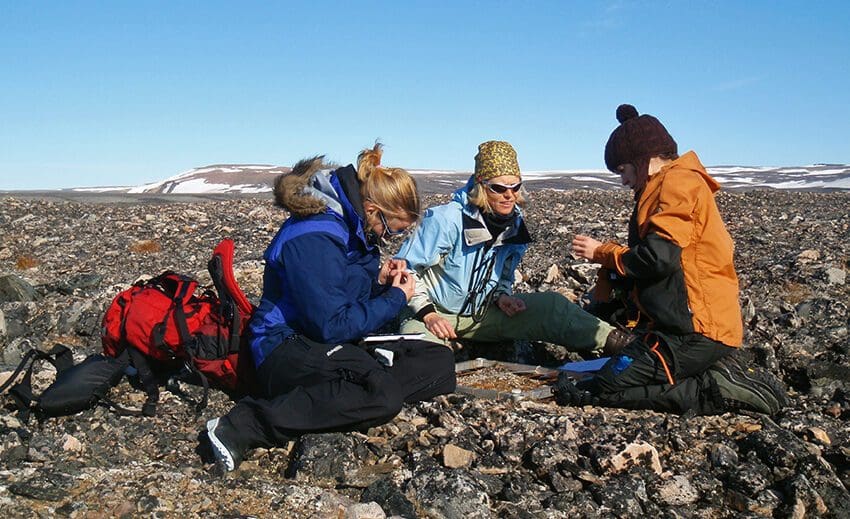Funding for new high-arctic, interdisciplinary field laboratory

Pernille Bronken Eidesen with AB-201 biology students, August 2010. Photo: Steve Coulson/UNIS
Top image: Associate professor Pernille B. Eidesen (in the middle) on fieldwork with Arctic biology students. Photo: Steve Coulson/UNIS.
UNIS associate professor Pernille B. Eidesen has gotten funding of NOK 1.35 million from the Olav Thon Foundation to develop a high-arctic, interdisciplinary field laboratory for research and teaching.
15 January 2019
Press release from the University Centre in Svalbard
The project ”Development of a high-arctic, interdisciplinary field laboratory for research and teaching” was awarded NOK 1.35 million from the Olav Thon Foundation. The funding is for a three-year period. The field laboratory project is led by UNIS Associate Professor Pernille B. Eidesen.
Unique learning outcomes
To include students in field-based research activities requires more planning and resources than ordinary teaching. However, learning outcomes are completely unique. The Department of Arctic Biology at the University Center in Svalbard (UNIS) wants to develop a high-arctic, interdisciplinary field laboratory for research and teaching.
 – We want to establish measurement stations for obtaining a variety of parameters, biotic (living organisms) and abiotic (non-living conditions), that are relevant to understanding both single components and relationships in an ecosystem. Such a field laboratory will create a cost-effective research synergy between employees, authentic research experiences for the students, and form the basis for initiating new projects with national and international partners who can contribute with further instrumentation and data capture. In this way, we can embrace the interaction in the ecosystem as a whole, and over time separate seasonal and mid-year variations from more lasting climate change, explains Pernille B. Eidesen.
– We want to establish measurement stations for obtaining a variety of parameters, biotic (living organisms) and abiotic (non-living conditions), that are relevant to understanding both single components and relationships in an ecosystem. Such a field laboratory will create a cost-effective research synergy between employees, authentic research experiences for the students, and form the basis for initiating new projects with national and international partners who can contribute with further instrumentation and data capture. In this way, we can embrace the interaction in the ecosystem as a whole, and over time separate seasonal and mid-year variations from more lasting climate change, explains Pernille B. Eidesen.
Academic institutions are under constant pressure to streamline operations and reduce costs. Researchers and teachers must therefore cooperate more closely to be able to take advantage of the time and resources we invest in fieldwork in a good way, so that both the research benefits for the employees and the learning outcomes for the students are best possible, she says.
Open sea – coastal zone – land gradient
Eidesen and the department have great faith in a joint project such as the development of a high-arctic, interdisciplinary field laboratory for research and teaching, where data can be obtained in a gradient from the open sea, through the coastal zone and onto land over several years. Common data will be obtained through instrumentation and sampling, but used in various ways. All data collected, small and large, should be made available in a common database, and eventually made available through, for example, SIOS (Svalbard Integrated Arctic Earth Observing System).